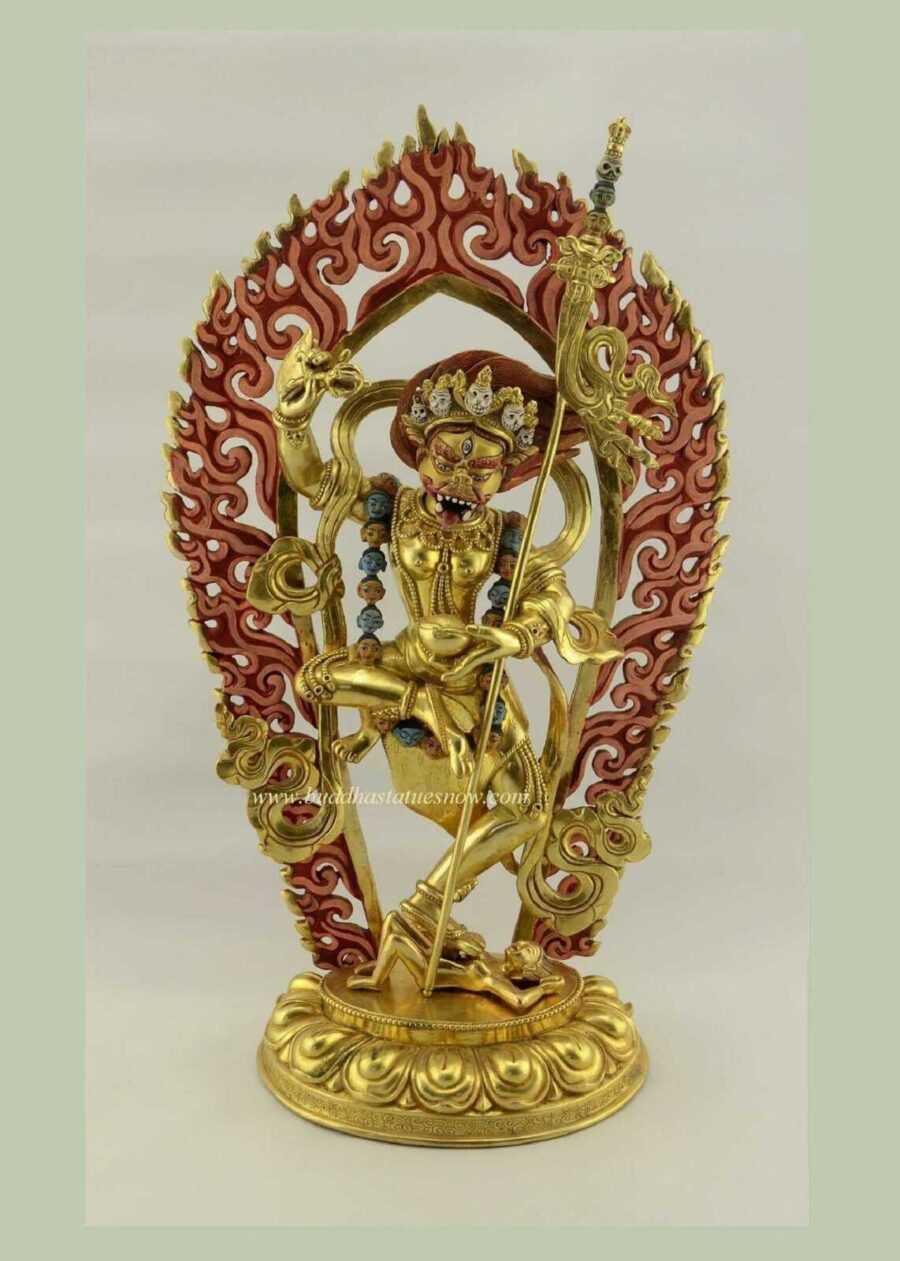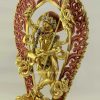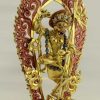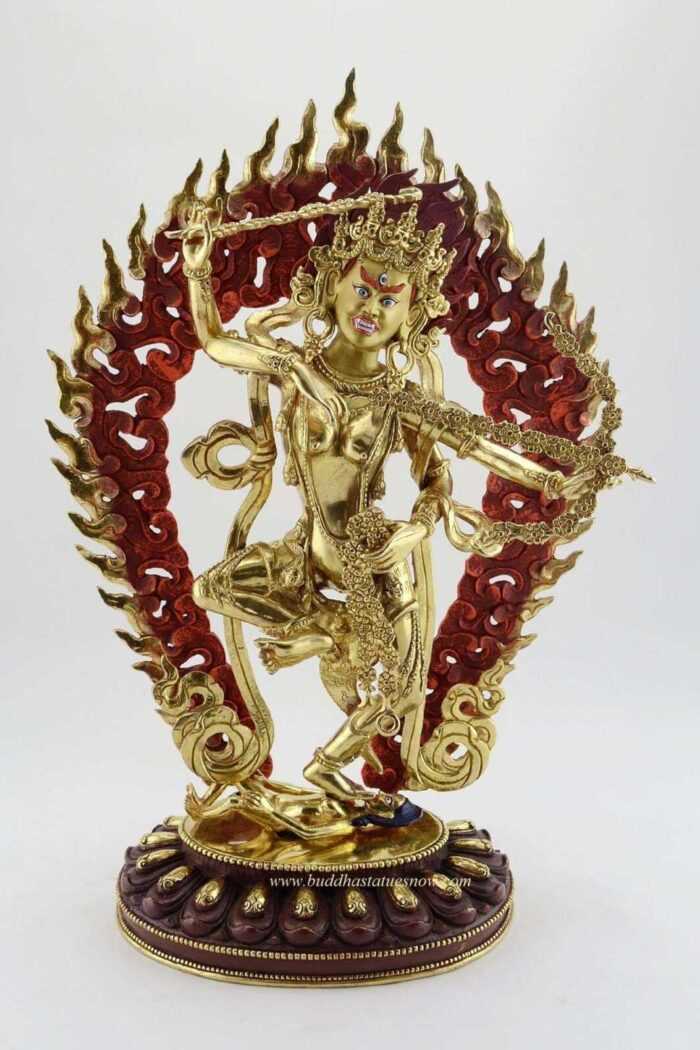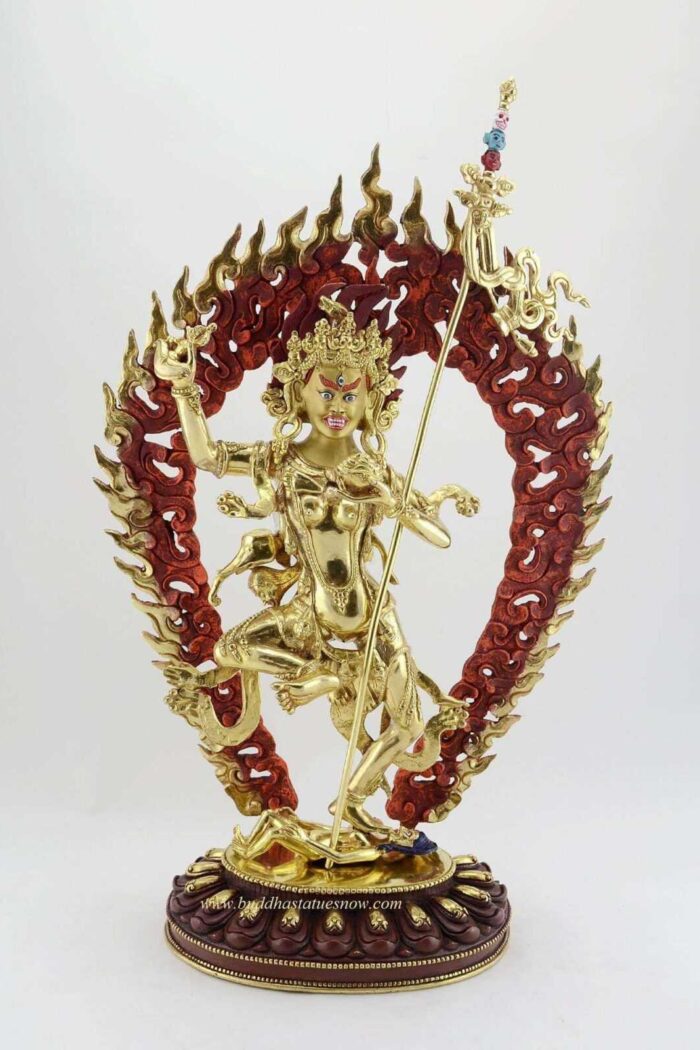Our Simha Mukhi Jogini Dakini Statue is indeed a very interesting sculpture. In English, the translation would be “lion faced dakini”. In Tantric Buddhism, the dakini is an immortal nonhuman female that takes temptation of sentient beings as her primary purpose. However, it is mostly the high level practitioners who are the preferred targets. For them it is the final test for spiritual realization. As a result, this Simha Mukhi Jogini Dakini Statue is rich with frightening symbolism.
The crown of her Tiara is adorned with the 5 skulls symbolizing the 5 poisons. She wears the adornments on her tiara to portray her mastery over desire, anger, ignorance, pride and jealousy. Additionally, in her right hand she raises a curved flaying knife towards the sky. This knife is called the “Kartika”. The kartika is known as the “knife of the dakinis” and it is a prominent feature wielded by wrathful Tantric deities.
In the left hand of our Simha Mukhi Jogini Dakini Statue she is holding the skull cup known as the “kapala”. Traditionally, this was made from the skull cap of a human. Her cup is filled with menstrual blood or sometimes the elixir of immortality.
Additionally, she wears a necklace of fifty human skulls and she stands on her left foot atop a human corpse. The human skulls and body represent the illusion of the self and also ignorance. Therefore, she displays her triumph over the inherent weakness of sentient beings.
Furthermore, the khatvanga rests in the nook of her elbow and against her shoulder. Additionally, there are 3 skulls representing liberation from the 3 worlds (Trailokya) impaled on it’s tip. The 3 skulls represent the realms of desire, form and formlessness.


